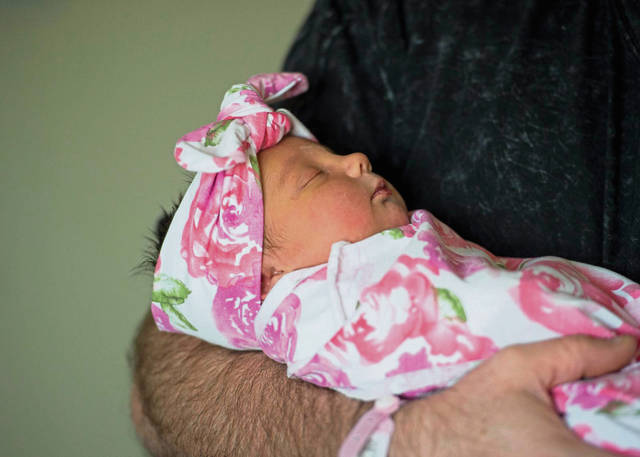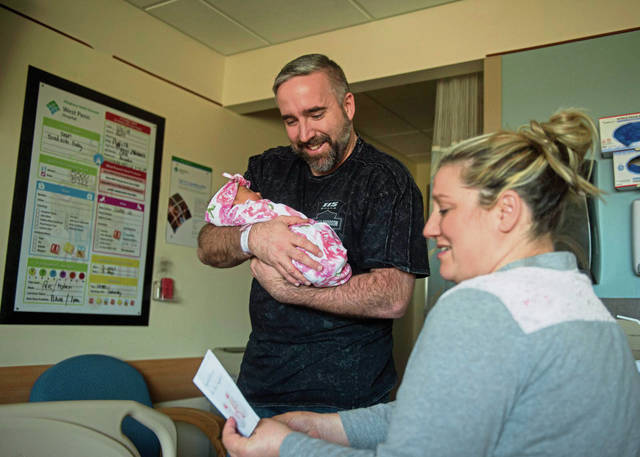As birth rates drop, hospitals are rethinking how babies are delivered
The region’s top health care providers are taking different approaches to delivering babies as birth rates continue to drop.
UPMC is consolidating its services to one of its main specialty hospitals and using telemedicine to provide services to those outside of the city, while Allegheny Health Network is focusing on providing services at smaller, regional hospitals.
UPMC announced last week that Mercy’s inpatient women’s health, obstetrics and neonatal intensive care unit will move to UPMC Magee-Womens Hospital — soon to be the only UPMC facility in the region to offer childbirth services.
The move comes as birth rates across the region continue to decline.
The change is part of a plan to consolidate the services into one hospital, while making room at Mercy for other services and the UPMC Vision and Rehabilitation Hospital set to break ground adjacent to Mercy this year.
“We are constantly looking at what the best way to deliver care is,” said Dr. Richard Beigi, president of UPMC Magee. “We see the pros being that it’s really concentrating that kind of care at one of our specialty hospitals.”
To fill in the gaps for patients who live outside the Pittsburgh area, UPMC offers telemedicine, in which patients can talk with a doctor from Magee via video to go over test results, ultrasounds and answer any questions. Unless they are suffering from a major complication, patients usually can deliver at their local hospital, he said.
“For a lot of women, it has enabled them to receive their care and also deliver in those locations without having to drive really far,” Beigi said.
Overall, the birth rate in Pennsylvania is down, going from 145,874 births in 2000 to 137,771 in 2017, according to data from the state Department of Health. Local data match those numbers, with births in Allegheny County going from 14,281 in 2000 to 12,958 in 2017. Surrounding Armstrong, Westmoreland and Butler counties also saw births decline during that period.
Those numbers match a national trend identified by the Centers for Disease Control and Prevention in a report issued last week. The report, using 2017 data, showed not enough babies being born to replace the current population. The CDC also reported that birth rates declined in 2017 for women in their teens, 20s and 30s, leading to the fewest babies in 30 years. Women in their early 40s were the only group with higher birth rates in 2017, up 2 percent from the previous year. That rate has been rising since the early 1980s.
Beigi said factors contributing to lower birth rates could be increased and more accessible options for contraception, and more women delaying having a child because of career and financial concerns. He also noted that, if women start having children later in life, they also tend to have fewer children overall, which would also bring down the birth rate.
“If you’re starting in your mid-30s, you’re not going to have six kids,” he said. “You might, but it’s highly unusual.”
Allegheny Health Network is taking the opposite approach. It’s expanding its options for deliveries in the Pittsburgh region. The network has three hospitals where women can deliver — West Penn in Pittsburgh’s Bloomfield neighborhood, Forbes Hospital in Monroeville and Jefferson Hospital in Jefferson Hills — and has another on the way that is set to open in 2021 when AHN Wexford is built.
Dr. Allan Klapper, chair of the AHN institute for women and children and president of soon-to-be Wexford Hospital, said requiring women to travel an hour or more to deliver a baby can lead to dangerous situations.
“It’s better to have high quality care in the community instead of forcing patients to come into a distant location,” he said. “If the mom is, let’s say, in pre-term labor, sometimes an hour can be the difference between stopping that pre-term labor and the baby delivering at 28, 30, 32 weeks.”
AHN opened the area’s first new obstetrics unit in 30 years when it added the unit at Jefferson Hospital. The hospital recently celebrated its 1,000th delivery in a calendar year at the end of 2018.
“I think we’ve shown it does make sense putting units thoughtfully in the community and making sure you’ve got the high-quality specialists,” Klapper said.
Although many smaller, regional hospitals in rural areas have stopped delivering, Butler Memorial and Armstrong County Memorial hospitals still remain independent facilities that provide obstetrics services to those counties.
Hospital officials said the expectations of families have changed when it comes to their obstetric care — they want a modern, bigger and more homelike atmosphere in which to deliver.
“The expectation around quality goes without saying,” Klapper said.
Beigi echoed those thoughts and said UPMC also sees a demand for better facilities.
“They all kind of want and expect nice facilities,” he said. “That’s important because nice facilities take money to upkeep.”
Emily Balser is a Tribune-Review staff writer. You can contact Emily at 724-226-4680, emilybalser@tribweb.com or via Twitter @emilybalser.
Remove the ads from your TribLIVE reading experience but still support the journalists who create the content with TribLIVE Ad-Free.


